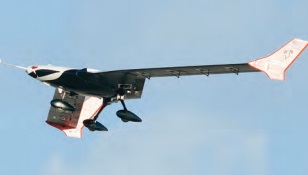Chapter: Hyperelastic Research Lightweight Flexible Aircraft, new invention technology, Research project papers,
Robust Virtual Deformation Control of the X-56A Model

Robust Virtual Deformation Control of the X-56A Model
An Armstrong research team has developed a virtual deformation controller designed to actively suppress flutter on the X-56A experimental aircraft by changing wing shape. A remotely piloted aircraft with a stiff body and flexible detachable wings, the X-56A was developed for the sole purpose of testing various active flutter-suppression technologies. As part of its sensor array, the aircraft wings will be instrumented with fiber optic sensors that can measure strain at thousands of locations. The controller will use these sensors in an adaptive feedback system to automatically manipulate the trailing edge control surfaces and body flaps to suppress flutter. A robust modal filter solution has been developed for wing damage assessment and robust flight control. The solution adaptively finds strain anomalies in the structure and reports them to the control system.
Work to date: The team has validated the controller for both flutter suppression and shape control in simulations using X-56A models that contain all six rigid-body degrees of freedom, flexible modes, 10 control surfaces, and actuators. Simulations have shown that the shape controller can affect the global angle of attack and achieve drag changes.
Looking ahead: Next steps involve non-linear simulations and in-flightexperimentation.
Partner: Air Force Research Laboratory
Benefits
More design freedom: Allows designers to consider lighter/larger wing profiles
Safer flight: Reduces likelihood of losing control
Applications
Aircraft design and aeroservoelastic tailoring Active flutter suppression
Loads and health monitoring
Hyperelastic Research/Lightweight Flexible Aircraft
Armstrong engineers are pioneering new research in aircraft design and modeling. Researchers are experimenting with revolutionary hyperelastic wing control technologies that can reduce weight, improve aircraft aerodynamic efficiency, and suppress flutter. Other cutting-edge research involves techniques, models, and analysis tools for flutter suppression and gust-load allevia-tion.Flight projects at Armstrong rely on high-performance aircraft that can support research on lightweight structures and advance control technologies for future efficient, environmentally friendly transport aircraft. This work has applicability beyond flight safety and design optimization.Armstrong's R&D capabilities in this area also can be applied to other vehicles, such as supersonic transports, large space structures, and hypersonic vehicles.
Related Topics